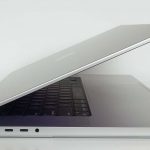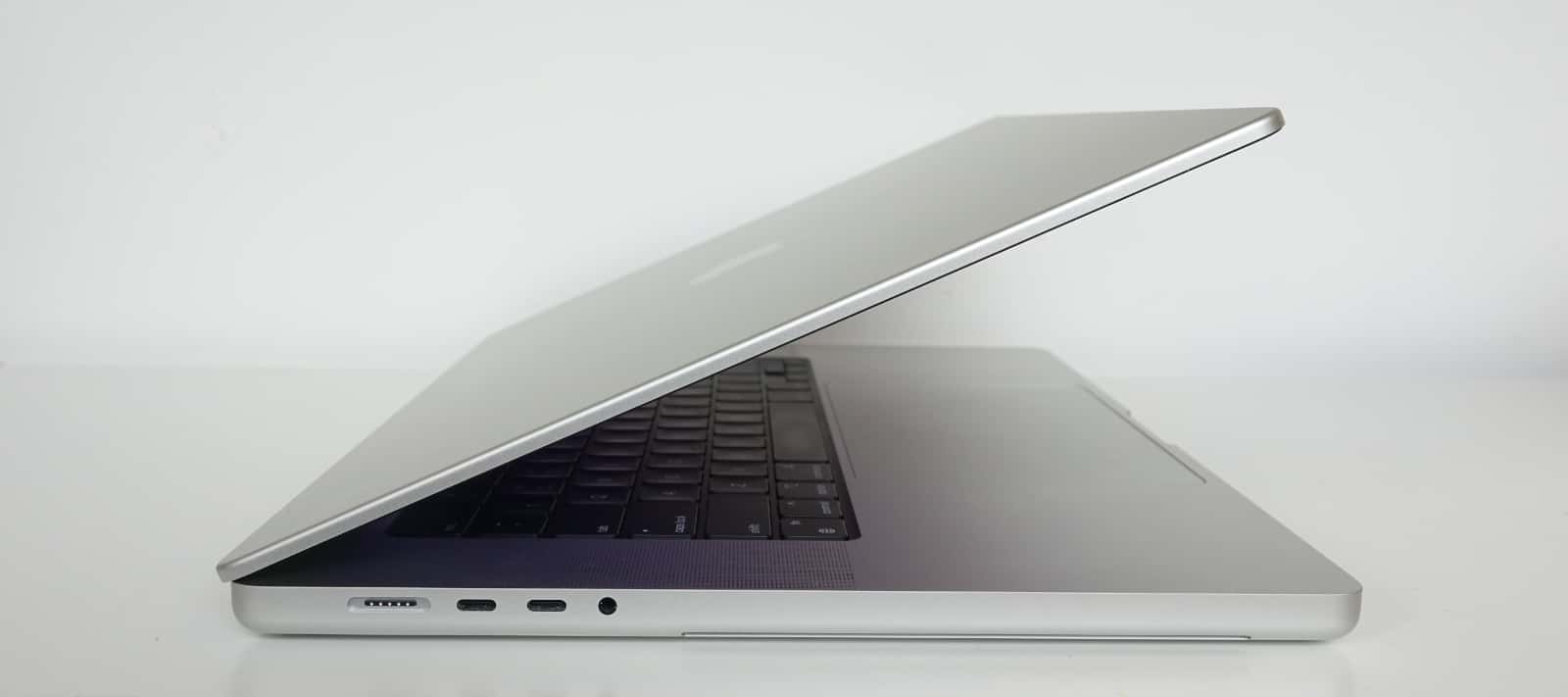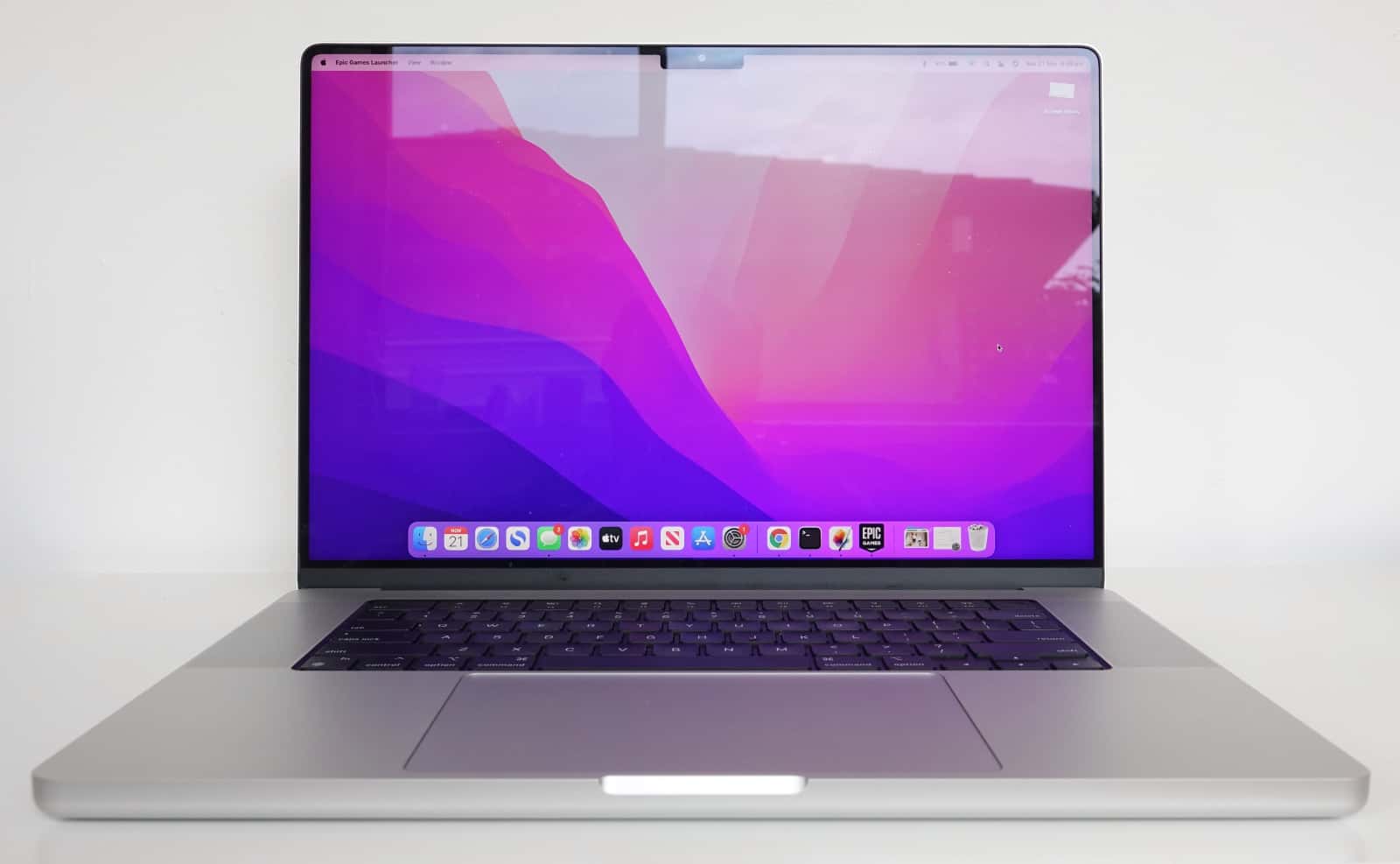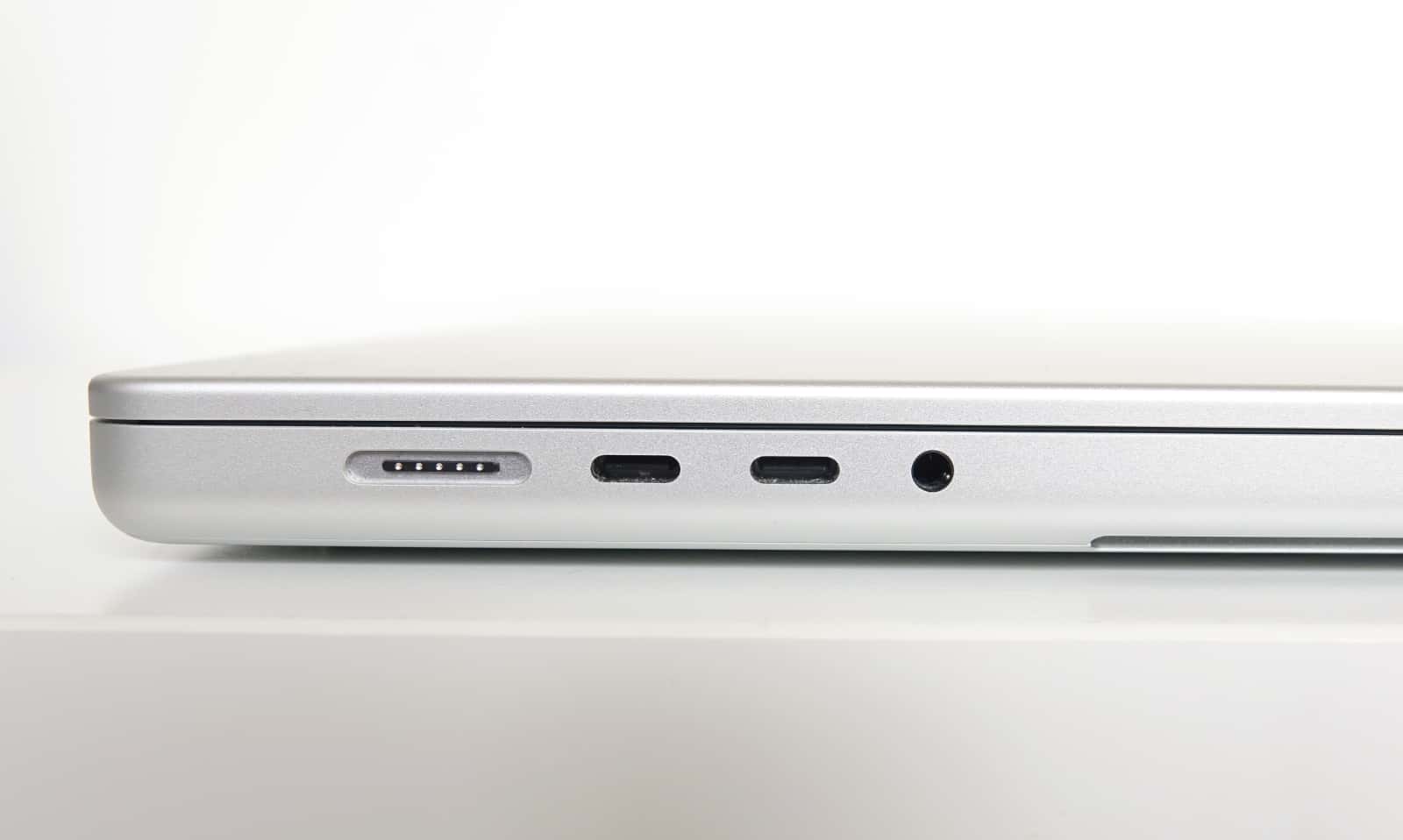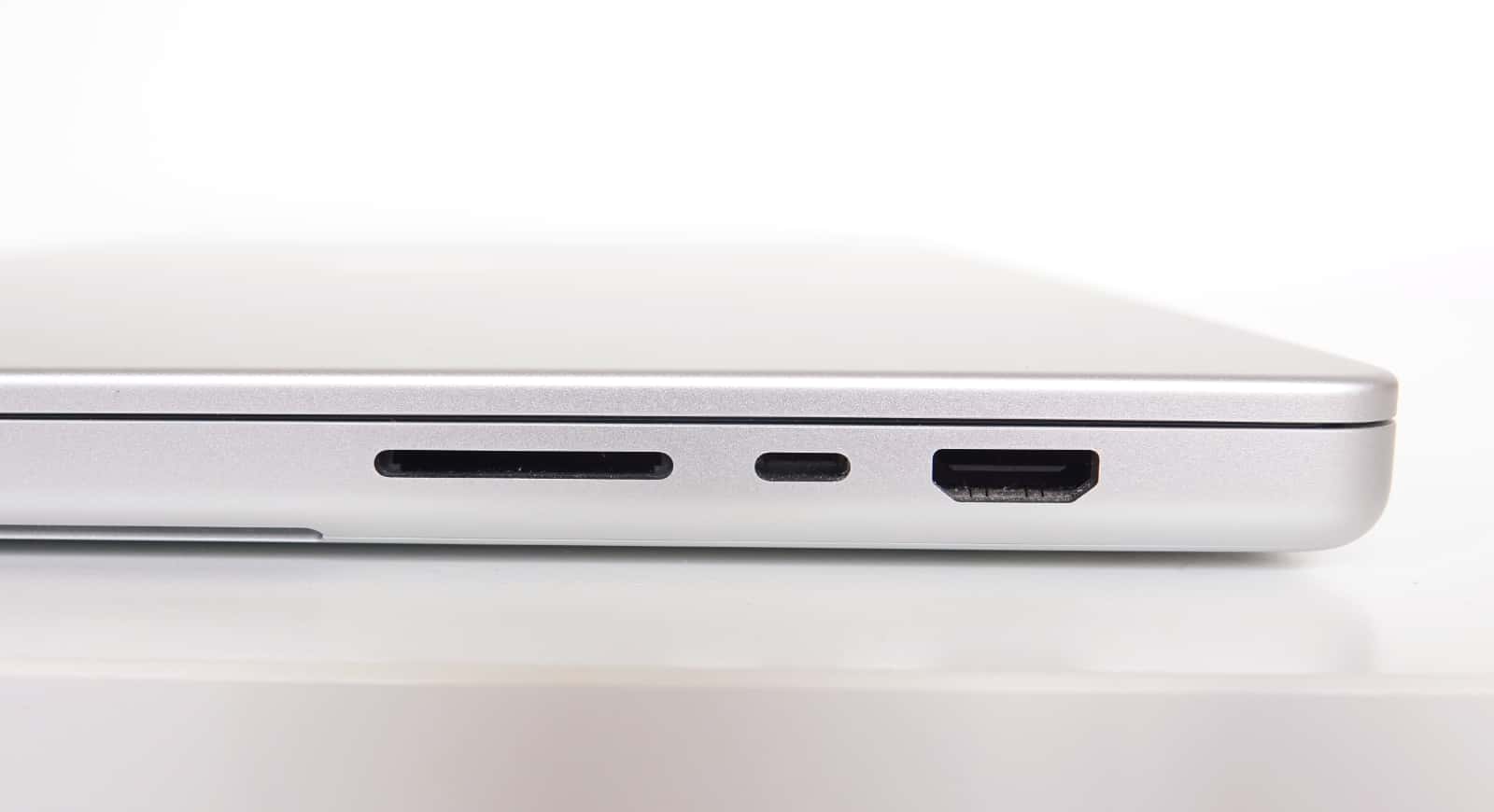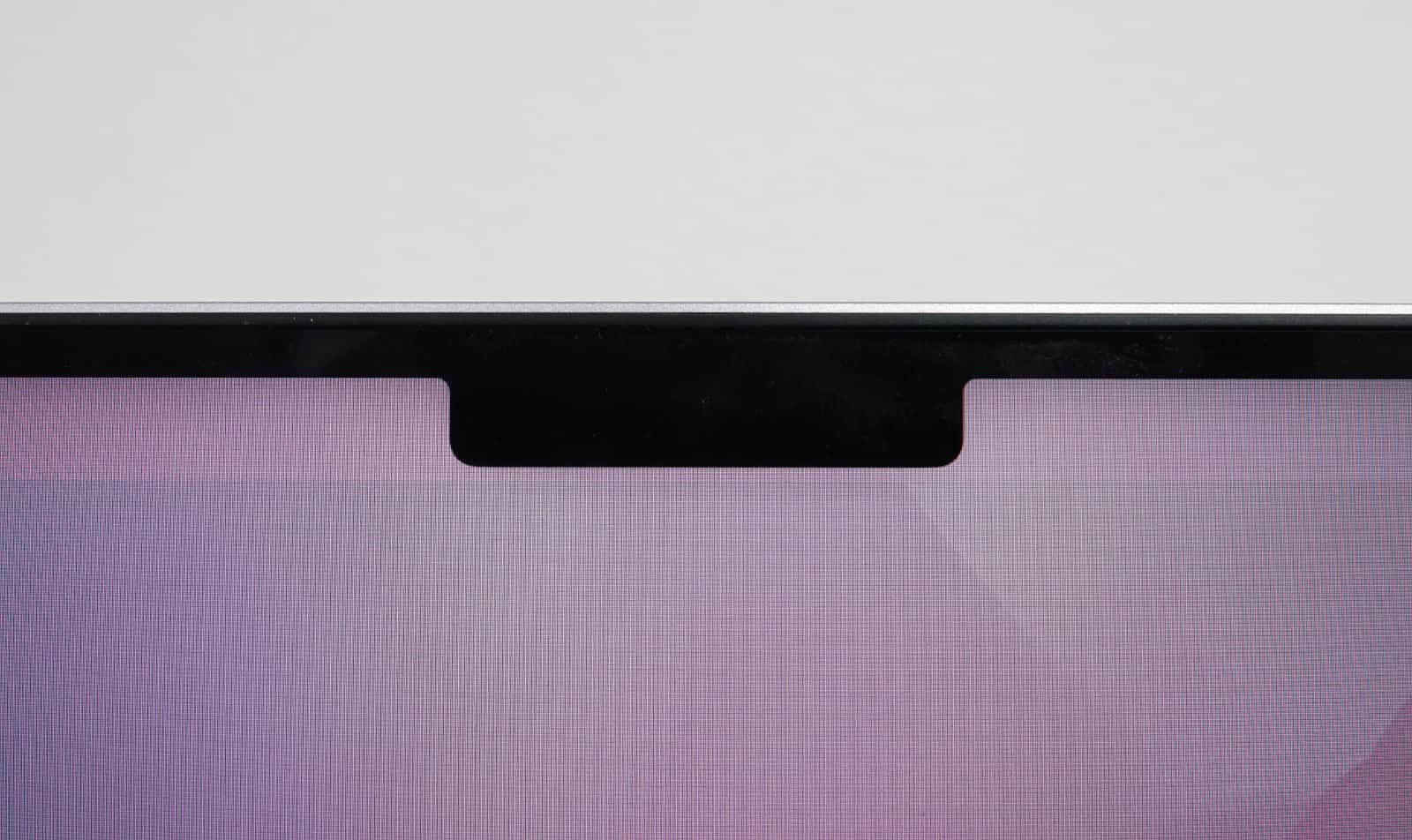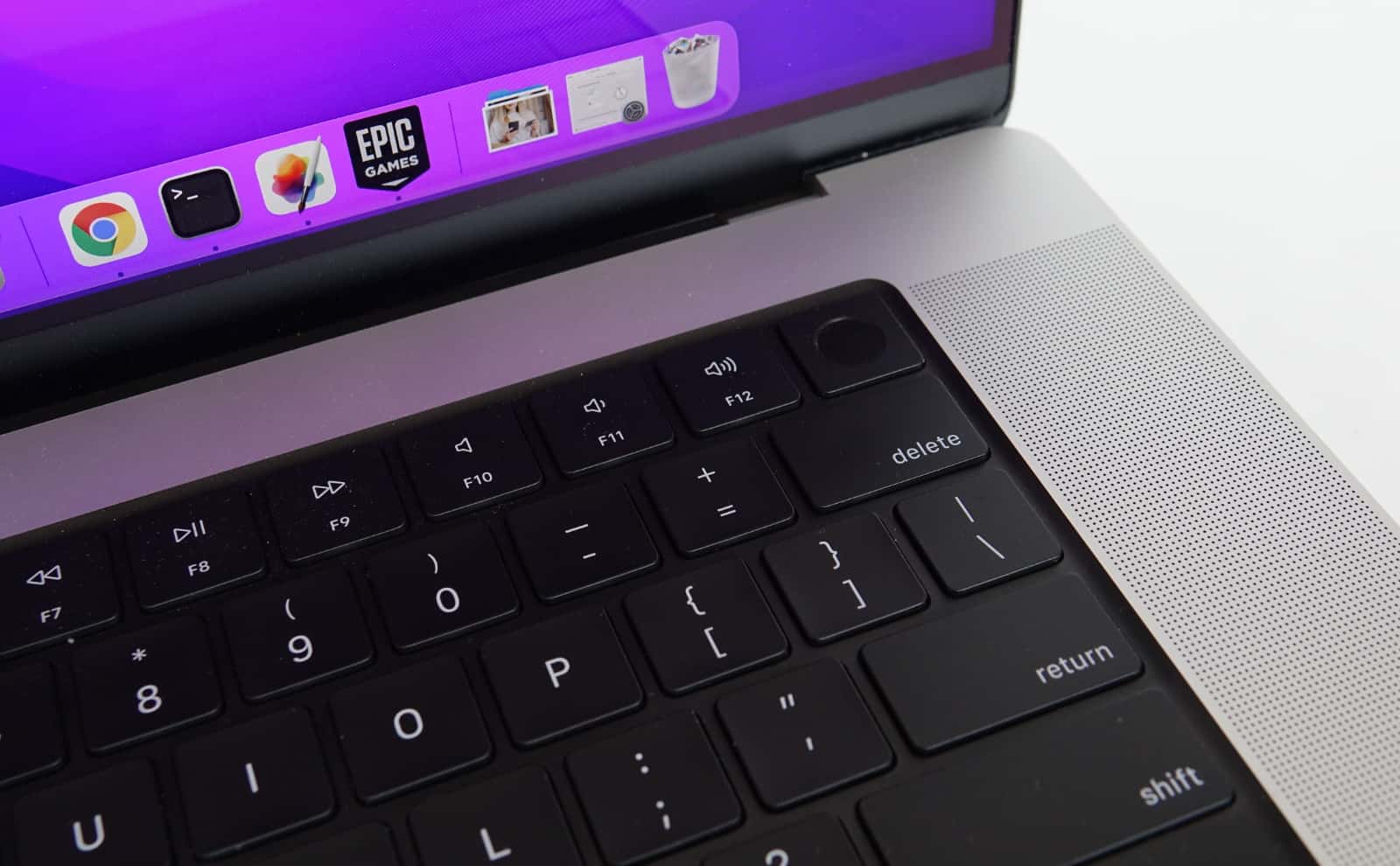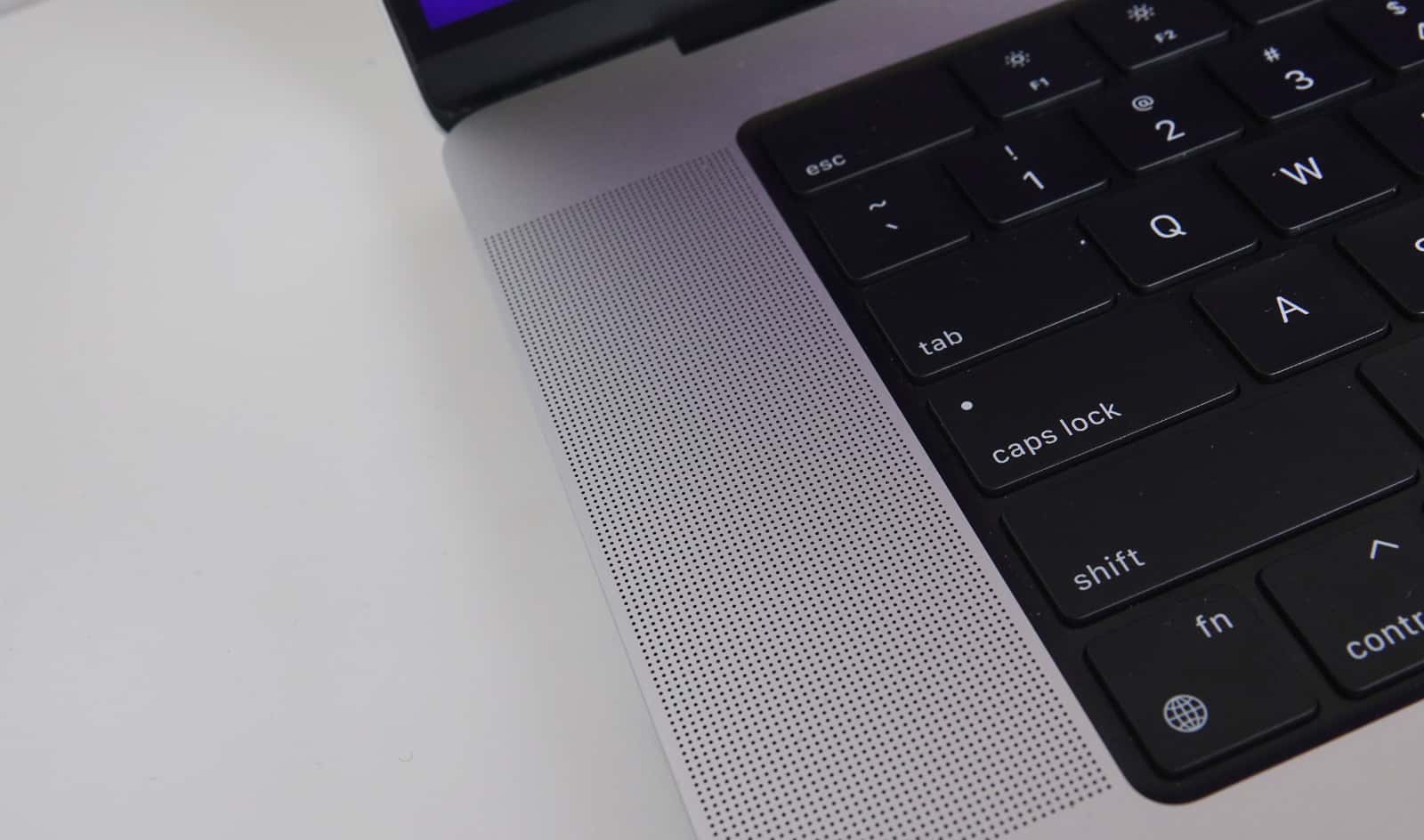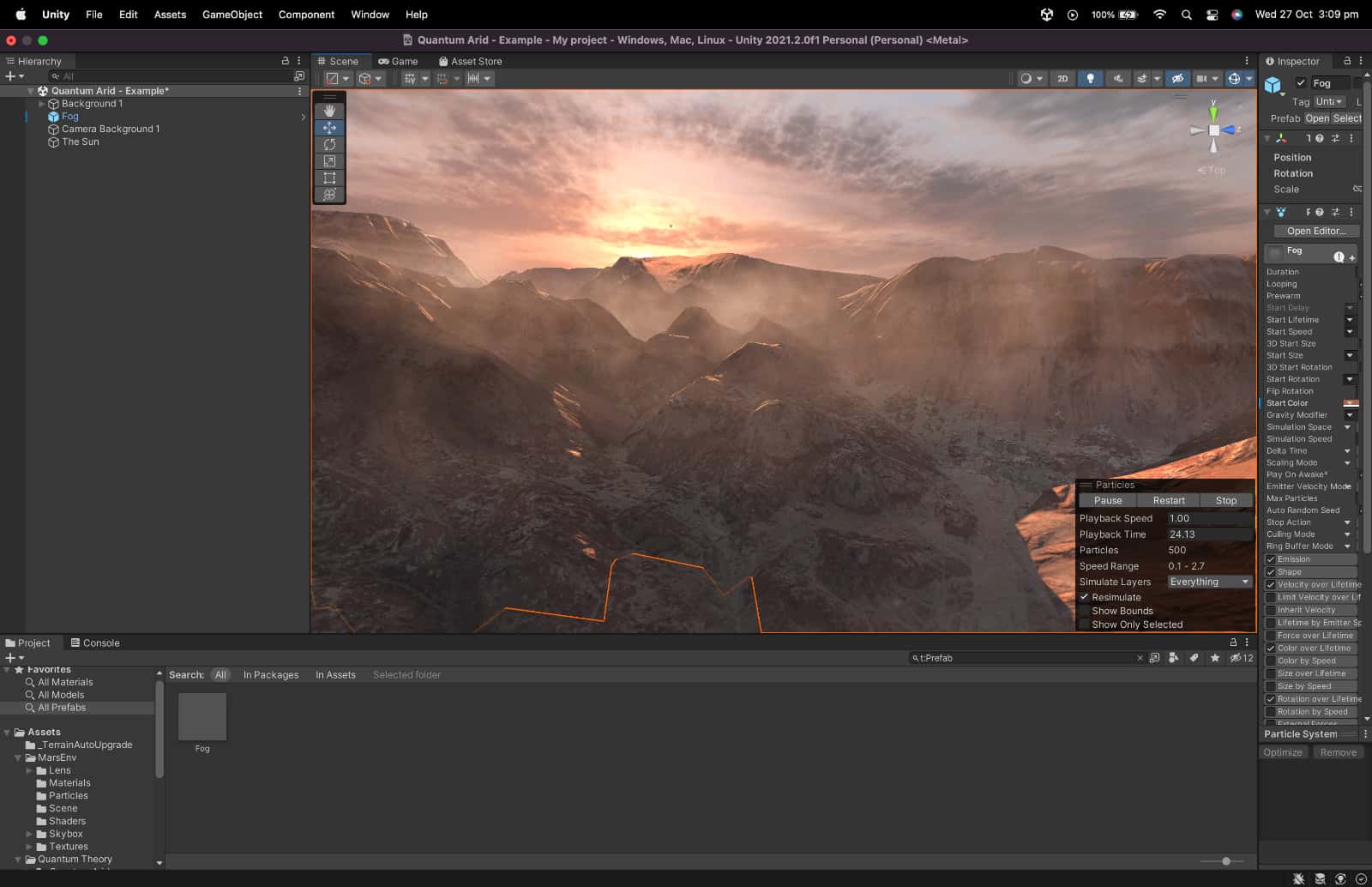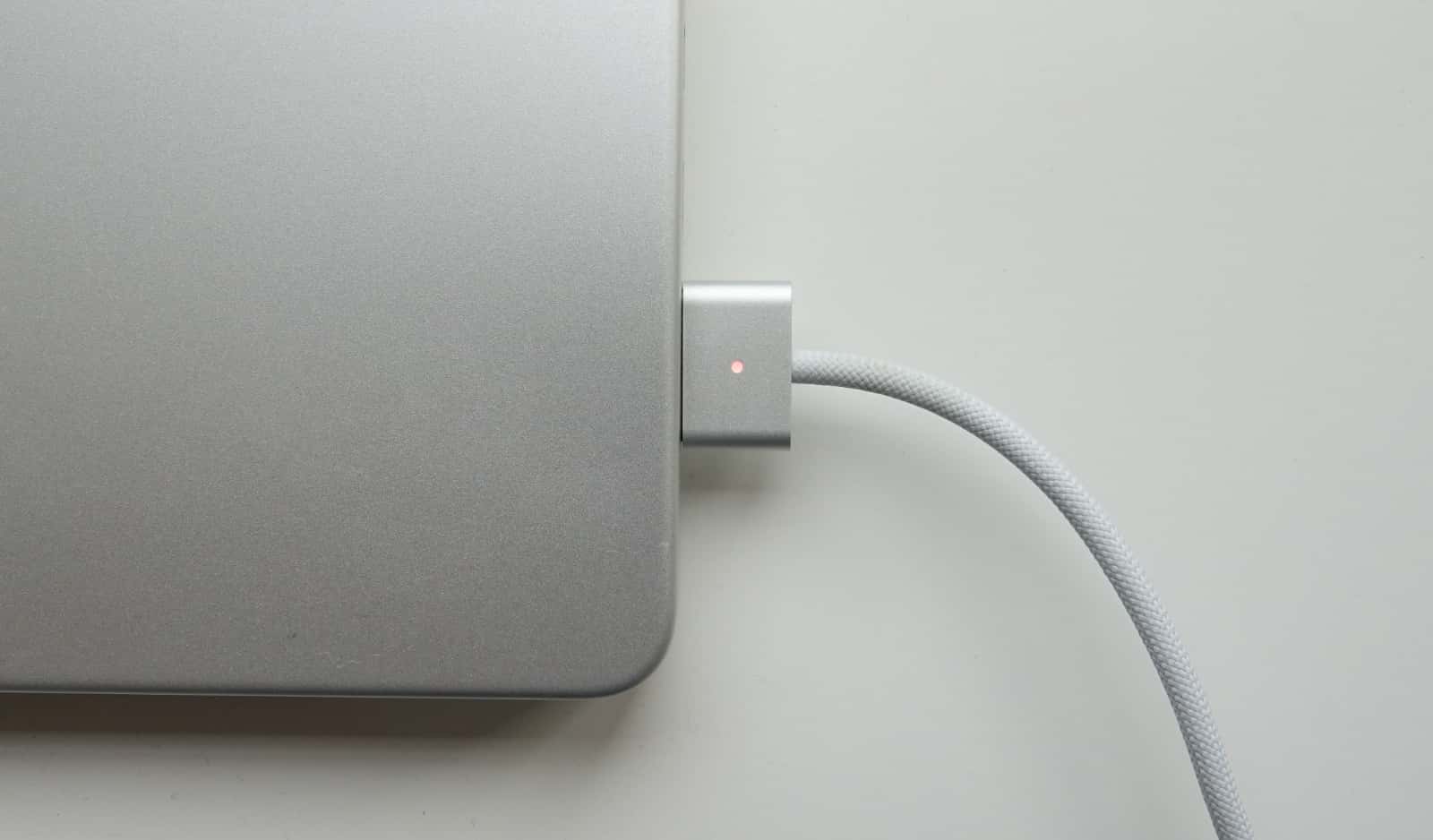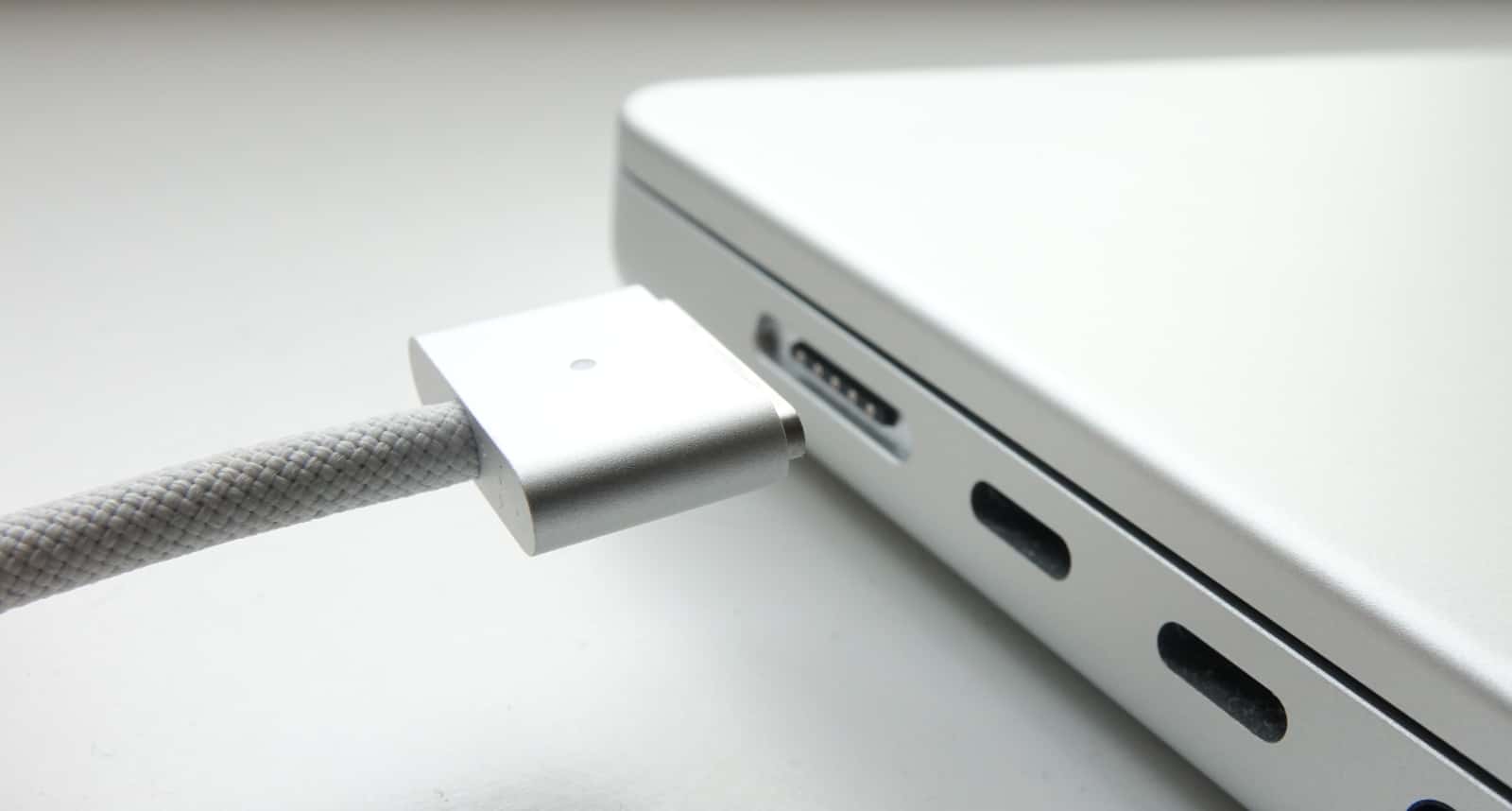Quick review
The good
The not-so-good
Not having to plug in a laptop is a luxury seemingly deserved for living in the future, but with the 20 hour battery of the 2021 MacBook Pro 16, it’s a luxury you might be able to afford.
Big laptops are a big deal for people who need them, and there are some pretty big reasons why. You might prefer a bigger screen with more resolution and real estate, and you might also prefer a bigger battery overall, or just something as simple as more room for more performance. Or it might be a combination of all three.
The combined effort of a big screen, big performance, and big battery life are partly why big 15 and 16 inch laptops are a big deal for people who need them, even when these days the focus is typically on smaller machines overall.
Yet the 16 inch MacBook Pro is super appealing. Arriving with Apple’s latest high-end piece of silicon, the M1 Pro (or the M1 Max if you can afford it), the 2021 MacBook Pro 16 is something else. Is it near the best laptop you can buy? (Spoiler alert: it may well be.)
Design
With a look more like that of old MacBooks Pro and a slightly thicker and heavier build, the new MacBook Pro is like a piece of yesteryear and an evolution at the same time.
Unashamedly metal and sleek without being shiny shiny and silly, it’s a machine that exudes a look Apple is famous for, reviving the classic MacBook Pro look for today. It even tells you it’s a MacBook Pro on the bottom, declaring it loudly and proudly if you know where to look.
Available in silver or space grey (our review model was silver), it’s Apple back to its full-metal look that keeps the whole thing looking solid, and something you can feel when you lift it, with the MBP 16 weighing a little over two kilograms.
Yes, this is a laptop that isn’t easy to carry one-handed, and that you can feel in the heft when you pick it up.
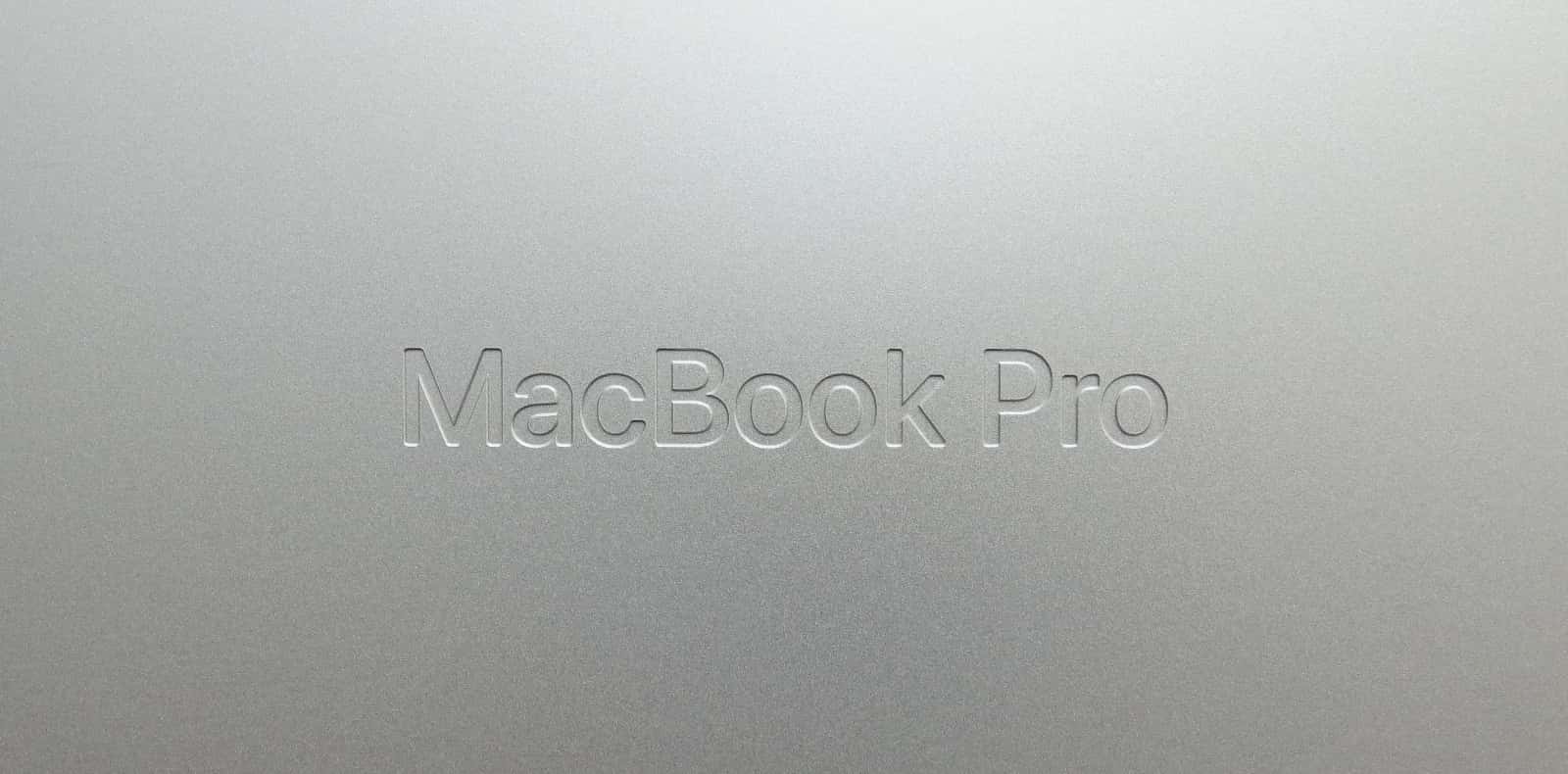
Features
Inside that throwback design with obvious hefty, the hardware is all high-end, with Apple producing one of the most premium laptops we’ve seen in a long time.
There are a whole bunch of different options out there, but you’ll find the MBP 16 starting from a 10-core Apple M1 Pro with a 16-core GPU, configurable to a 10-core M1 Max with more memory bandwidth and a 32-core GPU. More cores means more oomph, and while we doubt everyone will need beyond the 16 cores of the standard M1 Pro graphical processing unit, Apple is making sure there’s plenty to work with provided you have the funds to buy them with.
Out of the box, Apple equips the M1 Pro 16 inch MacBook Pro with 16GB RAM, while the M1 Max edition starts at 32GB, but you can equip any model with as much as 64GB, the maximum amount for either variation. Storage is similarly expansive, but only at the time of configuring and buying the laptop, with 512GB and 1TB native to the models depending on how much you spend, but as much as 8TB possible, again if you have the funds.
Outside of chip, memory, and storage specs, the hardware on the MBP 16 is consistent across the board, with the connections catering to three USB Type C ports running supporting both Thunderbolt 4 and USB 4, one HDMI port, one 3.5mm headset jack, and a MagSafe 3 connector for charging the laptop up. There’s also an SDXC card slot built into the 2021 MacBook Pro 16, a return of something old back to something clearly new.
Wireless connections are also a part of what’s offered here, with 802.11a/b/g/n/ac/ax WiFi 6 and Bluetooth 5, sitting inside a computer with a big battery and a 140W charging brick.
There’s also the screen, something we’ll get to shortly, as well as a 1080p FaceTime HD camera just above the display in a small notch, while the speakers and microphone are catered for with six speakers and three microphones, respectively.
It all comes together in a laptop weighing 2.15 kilograms (or 2.17kg if you opt for the M1 Max), measuring 1.68cm thick.
Display
One of the more important parts of Apple’s shiny new MacBook Pro is the screen, which feels bigger than ever, mostly because it is. And that’s not all.
Bezels be gone, as Apple cuts back on the border around the screen, throwing the camera into a notch up top, reminiscent of what many with an iPhone are used to. It’s almost as if Apple said “people are familiar with how we design our iPhone cameras, so let’s do that on our laptops”. And so it did.
The good news is that display improvement isn’t just seeing a change in what you can see around the screen, but how you see, as well.
In the 2021 MacBook Pro 16, you’ll find a 16.2 inch display as opposed to the 16 inch of the older model, upgrading the tech to mini-LED and using lots of tiny LEDs to backlight the screen similar to what’s in the 12.9 inch M1 iPad Pro, and indeed in many of the TVs being released this year.
Mini-LED is this year’s whiz-bang-wow technology for TVs that aren’t OLED, and arrived earlier on alongside a number of related initialisms and acronyms, and now it’s in the MacBook Pro display, as well, doing so as a “Liquid Retina XDR display”.
It also supports refresh rates up to 120Hz, but like the M1 iPad Pro and iPhone 13 Pro and Pro Max, shifts that refresh rate based on needs at the time, and the resolution is bigger than previously used, as well.
The old 16 inch Retina display sported 3072×1920 which was bit, while the new model gets in 3456×2234 — bigger — managing more brightness as well, and really just looking absolutely stunning.
Much like when we gazed at the M1 iMac’s display noting how it was a thing of beauty, the 2021 MacBook Pro 16 is brighter, sharper, and clearer. It really is a thing of beauty, too.
In-use
MacBook Pro 16 owners from the previous model will find a backlit “magic” keyboard along for the ride, complete with a Touch ID fingerprint button, but no Touch Bar. That is gone, replaced with regular function buttons, which are mostly more useful, and mean no more digging through Touch Bar menus to do things like fiddle with the volume settings.
Removing the Touch Bar also means there’s no more quick access to emoji, but that’s a minor issue, and we think the keyboard and mouse are just otherwise solid in general.
It can feel like could have made slightly better use of the space, though. A slightly oversized keyboard wouldn’t have gone astray, with a good 3.5cm of space for the on-board speakers on the bottom half of the laptop makes us wonder if Apple could have increased the keyboard size slightly and backed down on the speaker size overall. What would 0.5cm less of a speaker made to the keyboard size, we wonder.
Mind you, that might have affected the sound, because in this generation of MacBook Pro, it’s worth talking about.
Sound
Singing about, even.
Six speakers are found in the MacBook Pro 16, much like they were in the previous model, yet somehow, everything sounds better. Louder, clearer, and superbly balanced, Apple has managed to fit an impressive little sound system that will rival conventional desktop speakers, and may mean we no longer need to carry a Bluetooth speaker on trips away, whenever they come back to being a thing again.
The audio quality is wide and support for spatial audio is included in a way that uses psychoacoustic trickery to make it seem as though the spatial sound is everywhere. And it is lovely.
We cannot stress just how strong the sound is from the 16 inch MacBook Pro; this isn’t just a minor inclusion you expect to be in your laptop, but a big deal that’ll make a dent as you work. There were times through our MacBook Pro 16 review period where we intentionally chose the sound on the laptop, rather than picked a different speaker in the room. They are just that good.
Performance
Most of the reason you’d look to the new MBP 16 will probably come from the performance. After all, the 16 inch MacBook is a workstation-grade laptop, and while it’s also good for people after a suitably big laptop, Apple makes these things with creatives and people who need horsepower in mind.
Fortunately, the chips in this model are catered to suit.
If you thought we were impressed by the M1 chip after its introduction last year, the M1 Pro blew our eyelids off again, showing most things that like it handle beautifully, and even some which don’t fare quite well, as well.
On a benchmark level, the performance gains are clear, with the M1 Pro chip flooring the previous Intel MBP 16 in most areas, and delivering scores of performance.
We haven’t been able to check out the bigger chip, the M1 Max, but the M1 Pro did plenty for us in every test. Encoding video. Rendering audio. Running 3D graphics builds on various platforms. There’s almost nothing this thing can’t do.
It’s worth noting that not every app or platform has been built with Apple Silicon in mind, and that can create minor problems.
After the review of the M1 MacBook Pro 13 last year, we found the Unreal Engine struggled on the chip at points, not so much dealing with excesses of polygons and big graphics in the way an Intel Core model with a Radeon Pro might. Here in the M1 Pro MBP, that sees an improvement, but it’s not absolute perfection, but we also think that might be an issue with Epic’s Unreal Engine and not the MBP 16.
In comparison, Unity’s Editor — which does have an Apple Silicon variation — handles things totally fine, giving us an idea of what’s going on: Apple’s Rosetta2 does a stunning job of running apps that aren’t made for Apple Silicon instructions, but it’s not a miracle worker, and can’t magically make things perform the best ever. That’s up to developers to do, as well.
Shifts to proper Apple Silicon instructions will happen over time, mind you, so for the moment, your workstation-grade app may run, it just mightn’t perform as well as it will later.
In short, your time with the M1 MBP 16 may be dependent on how much processing older apps need for the newer chips. But the result is still typically pretty solid, and it’s clear from our experience that the M1 MacBook Pro 16 has the guts to make it work, and make the whole thing fly.
Battery
A massive battery also helps with that, with battery benchmarks rating the performance between 14 hours of standard productivity and up to 21 of video watching through the Apple TV app. Simply put, it means you can get a lot done on the new MacBook, and the results aren’t far from the suggested times.
While the battery will vary based on what you’re doing, some of our results have been staggering, one of which was not needing to charge the laptop for several days of use. There is just so much battery in the MacBook Pro 16, it beggars belief.
At one point, we were researching and writing, basically writing stories and reading the web, and it took over half an hour for the 2021 MacBook Pro 16 to move one percent down on its battery metre. It took 40 minutes to from 100 to 99 percent. That is staggering. In 15 years of reviewing laptops, I’ve never seen that before.
I’ve also never seen a laptop with this much power be able to give me closer to 12 to 14 hours of photo editing, writing and web surfing — the three main reasons you’ll find this reviewer using a laptop — with Pixelmator Pro taking advantage of the M1 Pro nicely. While the photo editing wasn’t able to get the full 20 hours I could pull if I just stuck to the basics, it was a staggering amount all the same.
Photo editing tends to take a lot out of a laptop, as it can very based on what you’re doing. Creative work tends to exhaust the battery like no other activity, maybe save for gaming and 3D development, and yet the M1 Pro MacBook puts up a fight, so much that we found closer to 14 hours of charge waiting for us.
Granted, the laptop is huge, so it understandably accommodates a fairly sizeable battery and therefore needs a massive power pack to charge it. However, Apple has made a positive change to the power pack, as well, providing a staggering 140 watts inside a pack not far from the size of the 96W the 16 inch used to come with.
This borders on incredible, and tells us what technology Apple is using to make this happen: Gallium Nitride. Also known as “GaN”, it’s a different material that goes on the inside of the power pack and runs cooler, making for a smaller pack for sizeable power requirements, something you can see in the comparably small 68W charger Belkin released last year, something we still rely on when we’re out of the house today.
The M1 MacBook Pro may well be Apple’s first GaN outing, and it’s a rather successful one. More please, Apple.
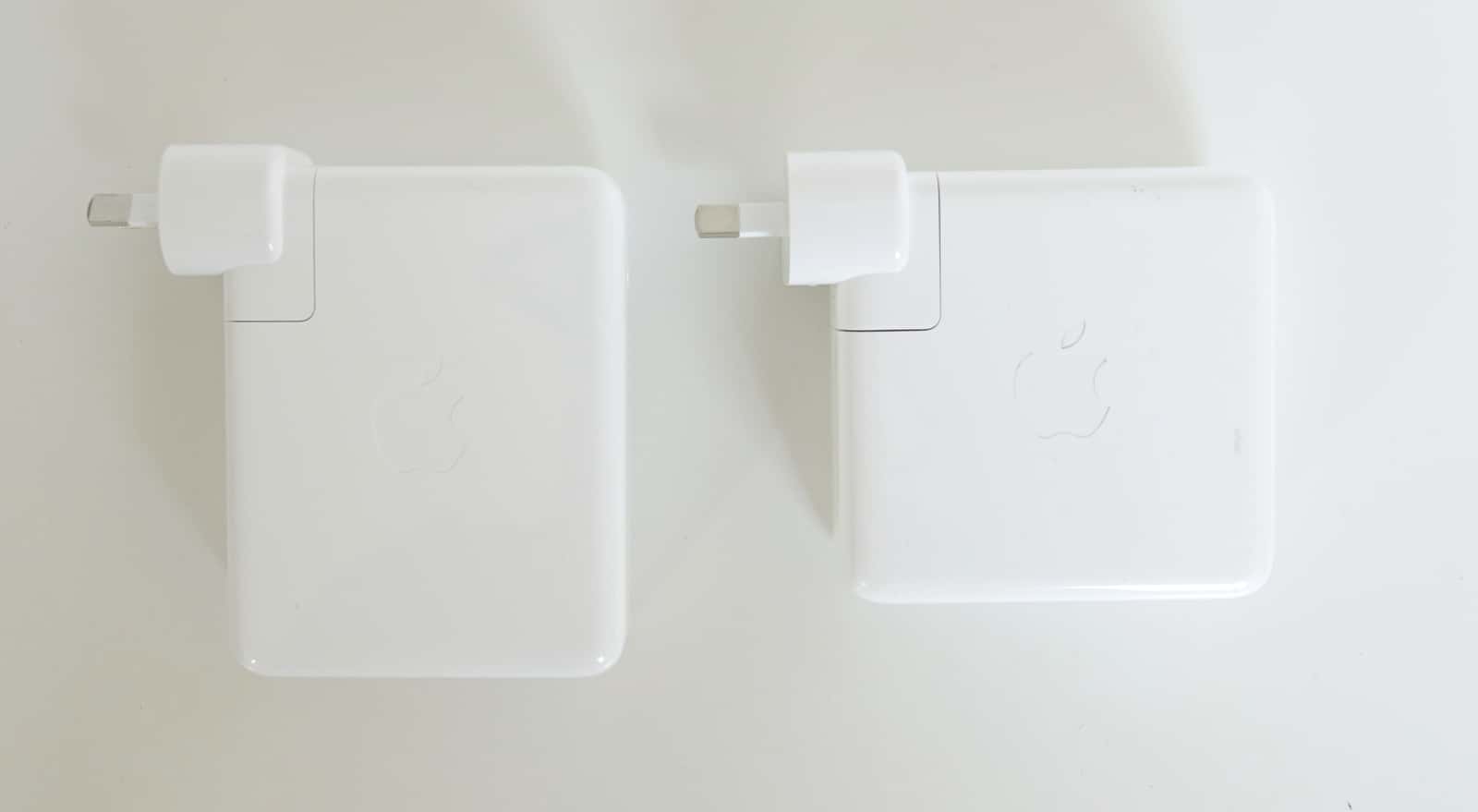
Value
All of this wonderfully impressive technology comes with a pretty hefty price, though you are paying for what is arguably the best tech at the time.
Starting at $3749 in Australia, the MacBook Pro 16 with the M1 Pro is understandably not an inexpensive computer. This is an expensive computer, in every sense of the word “expensive”.
Yet it still actually feels like Apple has managed to hit value, because the technology delivers a strong case for getting the best computer in its size, and the best is rarely inexpensive at all.
The M1 Pro chip is a monster and supports a heap of memory, the battery is top notch, design lovely, sound system incredible (for a laptop, anyway), and the display is like something we’ve not seen on a laptop prior. We know Dell has a Mini-LED monitor, but we’re not sure that we’ve seen the tech in a laptop before, helping to make it stand out.
Big features understandably come with a big price, so we’re not altogether shocked that the 2021 MBP 16 is expensive, and in fairness, the previous 16 inch model wasn’t much cheaper, either.
Buying a workstation-grade laptop means stumping up the cash — it’s true — and this computer doesn’t change that view, either. But at least the hefty price makes sense: you’re getting best-in-class tech, so at least you don’t feel ripped off in the process.
What needs work?
Beyond that hefty price, there’s very little Apple really needs to do to change the MBP 16.
Some may miss the OLED Touch Bar, which is missing in action on this otherwise excellent computer, but we suspect its lack of real adoption in the industry will make this aspect of the MacBook an unimportant omission in the grand scheme of things.
The same goes for the weight, because at 2.15 kilograms, the 2021 MacBook Pro 16 is not small. It actually manages to be 150 grams heavier than the Intel MacBook Pro 16 before it, taking a bit of a back step in this regard.
Slightly heavier, it’s not a comfortable one-hand hold, and instead begs you for a more solid grip. You do not want to have a loose hand on this one holding it like a plate. That’s a risk not worth taking.
The MagSafe port — cool as it is — is the only other catch, because it can feel a little like a waste.
On the one hand, you’ll get a great magnetic charge connector that can make use of the whole 140W GaN plug pack it arrives with. That’s something a standard Type C cable can’t do yet, while the MagSafe connector can. And hey, you can always charge the MBP 16 through one of its other Type C ports, because there are three of those on the body. Handy.
But whereas the Type C ports can be used for anything — charging, data, sound devices, video out, etc — the MagSafe port can only be used for charging, and there are only three Type C ports in this computer now, down from four in the previous model.
To Apple’s credit, you also get an HDMI port and an SDXC card slot, so it’s not as if the removal of one port erodes the use that dramatically, but it’s still worth noting that the convenience of a power port that could be any port from before is specifically a fixed power port in the high-end MBP. Not a deal breaker, just a factor worth pointing out.
Final thoughts (TLDR)
The most minor niggles can’t break our enthusiasm for Apple’s big new laptop, because it’s a big deal. While it’s clear the 2021 MacBook Pro 16 isn’t going to be for everyone, thanks in part to that hefty price tag, it’s a machine that screams “worth it” if you need it, thanks in part to everything it comes packing.
Apple has it all in the MBP 16: fantastic performance, a brilliant screen, a lovely design, fantastic usability, a solid feature set, and one of the best batteries of any laptop out there.
To say this thing is best in class isn’t being kind, just a statement of fact. Highly recommended.
